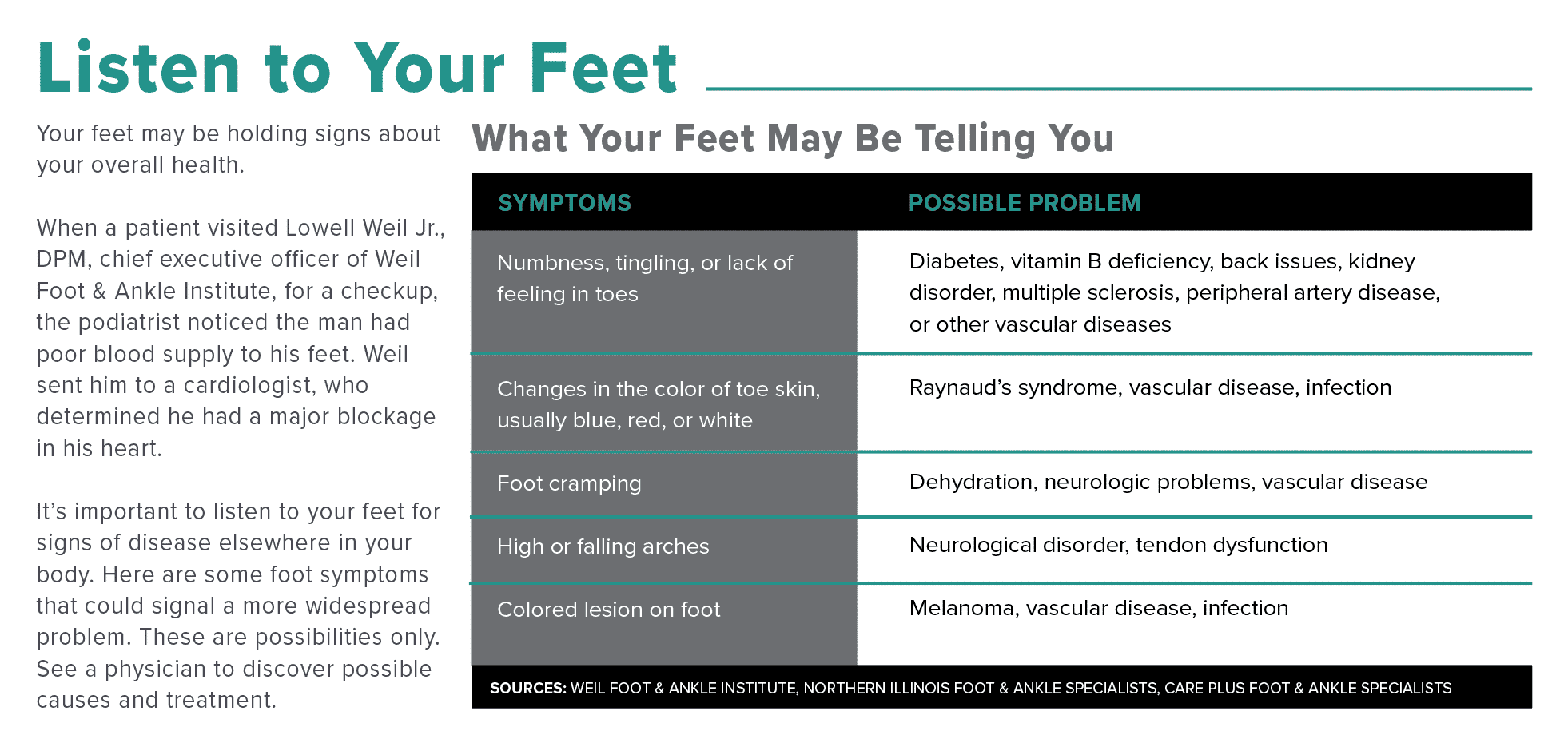Addressing foot problems in older adults
Our feet take a pounding every day. But for many older adults, aging feet can quickly become aching feet.
“Our feet change as we get older. For example, the tissues stretch out, losing strength and support,” says Lowell Weil Jr., DPM, chief executive officer of the Weil Foot & Ankle Institute, a national podiatry practice based in Chicago.
These structural issues can make older adults more prone to tissue, bone, and joint damage in the feet and around the ankles, Weil says. And they may have foot problems due to issues such as arthritis, thinning cartilage, or thickening toenails.
One in four older adults has foot pain, according to a study in the journal Maturitas. This pain can impair mobility and balance and raise the risk of falls.
Fortunately, podiatrists have various defenses for aging foot issues, from custom-made shoe insoles to injections and surgeries.
“We visit eye doctors to get eyeglasses or contacts for our eyes, and we visit dentists to improve our teeth. We have to consider our feet in the same way,” Weil says. “People underappreciate the importance of proper support of the feet. It’s the foundation for the entire musculo-skeletal system.”
Fat pad atrophy and aging feet
Podiatrist Ashley Lee, DPM, often hears older adults report pain on the bottom of their feet that makes them feel as if they were walking on their bones. That symptom can be a sign of fat pad atrophy, which often happens with age, says Lee, a foot and ankle surgeon with Northern Illinois Foot & Ankle Specialists.
Fat pad atrophy — the loss of fat that protects the ball and heel of the foot — can be painful. “All of us have a fat pad on the ball of our feet that provides cushioning. As people age, their pad shrinks and disintegrates,” Weil says. “With some people, it’s like walking on skin and bone.”
Podiatrists often prescribe cushioned insoles or custom orthotics that can help with the pain of fat pad atrophy. Replacing the fat pad is a challenge. Silicon and collagen injections have not had much success. The new Leneva injection, which involves injecting sterile human adipose (fat) tissue directly into the ball of the foot, is promising, Lee says.
Arthritis and aging feet

Arthritis in the foot — especially in the ankle and big toe joints — is no exception.
Osteoarthritis is erosion of the cartilage, which can lead to the loss of cushioning in the joints. Without a good cartilage cushion, bones can rub together, causing pain, inflammation, joint stiffness, and movement limitations.
“Over time, bones are relaxing and collapsing,” Lee says. “Elderly people who were active as kids often will see arthritis — especially if they had injuries.” The injuries cause wear and tear of the joints, which can lead to arthritis later in life.
Lee recommends shoe inserts or orthotics to hold up the arch. Topical treatments, like Voltaren gel, and oral steroids that reduce pain and inflammation can help.
Weil adds that people often seek hip or knee replacements to replace arthritic joints. “We can also do that with the joints in the foot and ankle,” he says. Although it’s not as common as hip and knee replacement, total ankle replacement may help people with severe arthritis and difficulty walking.
Bunions and aging feet
Bunions can also flare up and worsen as people age. Bones progressively change position near the big toe joint, Weil says. As the big toe moves toward the middle toes, a bone starts to stick out on the side of the foot, making it painful to do certain activities and to wear shoes.
People may have a genetic predisposition to bunions. Young people can develop them, too, “but the longer you’re on your feet, the older you are, the larger the bunion can get,” Weil says. “I see people in their 60s, 70s, and 80s who have severe bunions. It causes increased deformities, hammertoes, all kinds of cascading effects.”
Currently, not much prevents the progression of bunions, Weil says. Wearing a comfortable shoe with a roomy toe box can help reduce bunion pain.
Although surgery is a last resort, it can be helpful if the bunion is painful or causes functional problems. A surgeon may cut the bone and use screws to realign the big toe joint and shift it to its proper position.
Addressing foot issues
Older adults also may notice discoloration and thickening of their toenails. The discoloration may stem from fungal infections, Weil says.
For decades, 59-year-old Donna Pilotte, a patient of Lee’s, has lived with various foot ailments including arthritis and neuropathy (a nerve dysfunction that can create numbness and tingling), as well as “thick, ugly toenails that have gotten worse over the years,” she says.
“When I was younger, I didn’t realize how important our feet were,” says Pilotte, who lives in Schaumburg. “Since I’ve gotten older and have been dealing with these problems with my feet, I’ve learned if you have issues, go to the doctor immediately.”
For example, because neuropathy can signal diabetes, Pilotte regularly gets checked for diabetes. Pilotte is also considering seeking a special pedicurist who may be able to help improve the look of her toenails.
Foot pain can have a variety of causes. Start by addressing the underlying causes, to prevent aging feet from becoming aching feet.


Sheryl DeVore is the author of five published books and copious regional and national articles on science, nature, and health.












